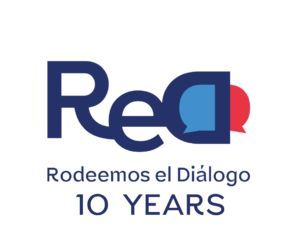Reincorporation Snapshot 13
Proposals for a Comprehensive and Sustainable Reincorporation
In our last snapshot, we reflected on the ‘Pilgrimage in Support of Life and Peace’ – a massive rally, organised by former FARC-EP members currently in the reincorporation process, that took place October – November 2020.
Growing public and economic insecurity has seen the death of more than 250 ex-combatants (or peace signatories, as former members of this guerrilla refer to themselves), and many more of them forcibly displaced. This is compounded by a lack of progress in the implementation of the National Reincorporation Policy (Conpes 3931), and more generally of the Framework for the Implementation of the Peace Agreement. This, and other reasons, led more than 2000 peace signatories to march from various territories in Colombia to the capital Bogotá, to deliver their proposals to the President. This snapshot analyses in more detail their proposals.
Proposals for a Comprehensive and Sustainable Reincorporation
On 6 November 2020, spokespersons of the pilgrimage presented their proposals to President Iván Duque, the Presidential Counsellor for Stabilisation and Consolidation Emilio Archila, and the Director of the Agency for Reincorporation and Normalisation (ARN) Andrés Stapper. The proposals addressed three areas: a normative framework for reincorporation, security guarantees, and the activation of a territorial approach.
Their demands concerning regulations and public policy included greater institutional coordination between entities in charge of implementation, and the definition of a regulatory framework to implement the National Reincorporation System. Importantly, this would articulate the offering from the institutions in the territories where this process is carried out, not just the Territorial Training and Reincorporation Spaces (ETCRs). In addition, the proposals highlight: the limitations of the reincorporation pathway regulations as an internal ARN resolution, the need for budget allocation, and the importance of decentralised participatory spaces such as the Territorial Reincorporation Councils.
On security, proposals were made for creating risk maps that prioritise the country’s most violent areas, providing life insurance for peace signatories, and installing a technical committee to analyse and measure the impact of human rights violations on this population. Within the Peace Agreement, there was already agreed the creation of a national strategy to prevent and combat stigmatisation and ensure security and protection plans and programmes would be in place for political participation throughout the country, especially in conflict-affected territories.
With respect to territorial dynamics, proposals related to land issues and equitable access to health, housing, education and other basic rights. Within this section, the authors highlight that the comprehensive reincorporation of all peace signatories requires recognising their rights regardless of where they are, reducing socio-economic inequalities between the peace signatories who are within the ETCRs and those who have relocated into New Reincorporation Areas due to their close links with their territories, lack of security guarantees and unsatisfied basic needs. These proposals call for the elimination of any legal or other restrictions that may generate inequality in access to goods, services and rights.
Progress and Challenges
In its last quarterly report of 2020, the UN Verification Mission in Colombia identified many of the concerns expressed by ex-combatants in their list of proposals and highlighted five aspects that must be prioritised to protect the Peace Agreement. These include protecting the life of peace signatories; supporting the productivity of this population through land and technical assistance; increasing the presence of the state in areas affected by violence; maximising the efficiency of the Monitoring, Promotion and Verification Commission; and supporting the work of the Comprehensive System of Justice, Truth, Reparation and Non-Repetition. UN Security Council members, while recognising the progress made in terms of political participation and transitional justice (see our TJ Snapshot 17), called for advancements in pending issues and action to stop violence against peace signatories and social leaders in Colombia.
Given the attitude of the ruling party – which ranges from hostile opposition to the agreement by some to the partial and disjointed vision of reincorporation framed within the official ‘Peace with Legality’ policy of President Duque – the dialogue of November 2020 between the spokespersons of the Pilgrimage for Life and Peace and the President is a significant political achievement.
Finally, on 3 February 2021, Counsellor Emilio Archila announced the launch of the National Reincorporation System. According to Archila, the system’s goal this year is to reach a commitment with the different government actors to guarantee progress in the reincorporation route’s components, which include economic sustainability, housing, family, education and health. The idea is to set objectives and timelines for actions that must be developed within the 15 years established for the reincorporation process. However, from the peace signatories’ perspective, neither was this system made within the framework of the National Reincorporation Council – as established by Conpes 3931 – nor has a binding regulatory framework been issued. These shortcomings ignore the participatory and consensual nature that should underpin the implementation of the Peace Agreement.
Embrace Dialogue celebrates the statements made by the government and the international community to permanently accompany those who have put down their weapons and who remain committed to the agreement. We also reiterate our concern for the safety and protection of all Colombians, and especially peace signatories, social leaders, and human rights defenders.


